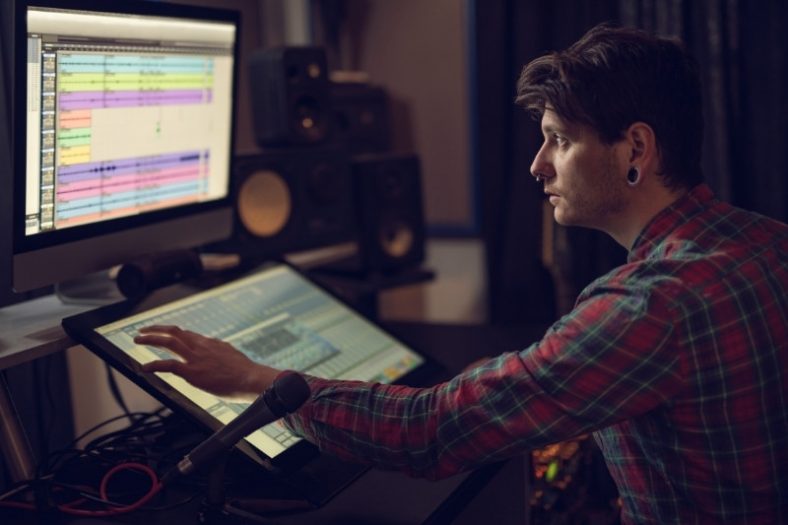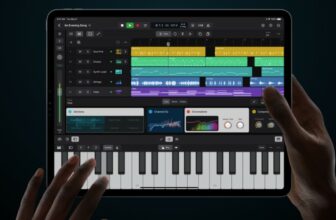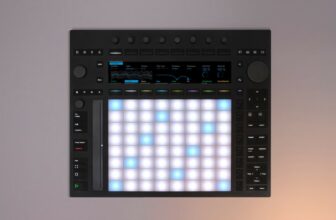Reference Tracks (Popular Tracks, Why They’re Important)

A reference track is a song by another artist that producers and audio engineers use to guide some of their decisions while mixing and mastering. By working with a master track, mixing and mastering professionals ensure their work is fitting of the best a music genre has to offer.
The notion of referencing other artists is indispensable to every stage of music-making. When an artist is creating a song, no matter how original the song is, he or she will be basing some decisions on popular tracks people already know and love. But there’s a difference between referencing as an involuntary process and using reference tracks during mixing and mastering.
Artists can go to YouTube and listen to a few tunes by The Beatles when they’re trying to make a Beatles-type song, for instance. But that’s not how reference tracks are used in mixing and mastering. In mixing and mastering, reference tracks are usually loaded directly into the DAW so that audio engineers can know how they sound all the time.
It’s a simple concept, but there’s more to reference tracks than it seems. Below, you can learn more about the importance of reference tracks, how to choose a good reference track, how to use reference tracks, and find some examples of popular reference tracks.
Contents
The importance of Reference Tracks
So, why should audio engineers rely on reference tracks? If a song sounds good, why should anyone care if it’s similar to a popular song of the same genre?
To comprehend the importance of reference tracks, one should understand that audio engineering isn’t the same as song composition. Mixing and mastering need to obey some strict, non-creative rules, and that’s why reference tracks are so valuable.
Here’s what you get when you use a reference track for mixing and mastering:
- A goal. Knowing when you’re done with a mix or master is a challenge. But with a reference track, you have a specific song that can inform you of when a mix and master still need some work. In other words, you know you’ve done your job right if the track you’re working with sounds as good as your reference track.
- A guideline for loudness. For a song to play on the radio without sounding out of place, it needs to be as loud as the other songs on the radio. Because loudness is such a complex and subjective concept, it’s virtually impossible to set the right level of loudness for a master without monitoring the loudness of one or more reference tracks.
- A genre-specific example. Try mixing and mastering a hip-hop song as if it was a rock song and I assure you that you’ll fail. Mixes and masters are genre-specific and every style of music has very precise demands. To mix and master music genres that you’re not accustomed to working with, you’re going to need a reference track.
- Lots of precise data. One of the best things about working with a reference track is that you can collect endless amounts of data on what makes the reference track sound good. For example, you can use a frequency spectrum analyzer to see how the track was EQed, check the loudness of the kick drum by isolating the sub and low frequencies with a multiband compressor, or even study the track’s dynamics to see if you’re adding too much (or too little) compression to the mix.
How to choose a good reference track
The reference track dictates many of the decisions audio engineers make during mixing and mastering, so they must choose the best-possible reference track from the very beginning.
Here are some tips on how you can make the right decision:
- Choose a pertinent reference track. Naturally, you should choose a reference track that’s similar to the track you’re working with. Don’t mix a hip-hop song while monitoring a rock song, and try to find a track that features the same elements of the track you’re working with. You shouldn’t, for instance, use an instrumental pop song to mix and master a pop tune that features vocals.
- Prioritize a quality mix over a quality song. A good reference track doesn’t necessarily need to be a good song (even though it helps). When choosing a reference track, prioritize the quality of the mixing and mastering over the quality of the composition and performance. If your favorite song happens to be a lo-fi tune from the 80s, I’m sad to inform you that it won’t make for a good-enough reference track.
- Get the best possible quality on the audio. Don’t just download the reference track from YouTube. Find the best possible audio in the most lossless format available to ensure that you’re working with the best the market has to offer.
- A recent master is better than an old master. You should never rely on an old reference track for mastering because loudness has evolved immensely over the past few years. In the age of the loudness war, it’s important to keep up with the loudness of recent releases. This way, your master won’t sound flat or too quiet when playing on the radio. Of course, you shouldn’t make music loud for the sake of it, but music that’s way lower in volume to other tracks will often be perceived as lower quality by the listener.
- When working with other artists, consult them. If you’re mixing and mastering for another artist, make sure you allow him or her to pitch in on which reference track you should use. Even if the choices other artists make aren’t perfect, they will most likely enjoy your mix once it’s complete.
How to use reference tracks
It would be impossible to list all the different ways in which reference tracks can be used, but this step-by-step process should give you a broad idea of how to use reference tracks:
- Select the best-possible reference track by following the criteria listed above.
- Find the best version of the reference track in terms of audio quality.
- Upload the file to your DAW of choice.
- Make sure the reference track isn’t being processed by any audio effects placed in the master bus (even a transparent limiter can mess up a song’s tone).
- Mute the reference track during mixing and mastering so it can be quickly soloed every time you need to consult it.
- Once your mix/master is complete, export it and compare it to your reference track using an audio player outside of your DAW of choice.
Examples of popular reference tracks
Pop music: The Weeknd – “Blinding Lights”
The songs of The Weeknd were mixed by the Grammy Award-winning engineer Serban Ghenea and sound utterly amazing. They’re extremely loud, crispy, and dynamic. The arrangement features all traditional pop-music elements, including big-chorus vocals, drum samples, a groovy bassline, and even a big synth melody.
Funk/R&B: Silk Sonic – “Leave the Door Open”
In addition to being a perfect song, Bruno Mars and Anderson Paak’s “Leave the Door Open” is arguably one of the best mixed/mastered tunes I’ve ever heard in my life. If you’re working with a funk/R&B track and it sounds nearly as good as this one, just go ahead and pat yourself on the back!
Hip-hop: Kendrick Lamar – “N95”
Kendrick Lamar is the go-to artist when you need a high-class hip-hop reference track. While some of his mixes can sound a bit harsh, that’s precisely what you want from a banging hip-hop song.
For a great-sound trap-music reference track, I still think Migos’ eerie “Bad and Boujee” is perfect. For a great-sound SoundCloud rap-style tune, check out YEAT’s highly-energetic “Turban.”
Rock: Jack White – “Over and Over and Over”
When it comes to mixing and mastering, Jack White is the undisputed king of modern-day rock. His left-right-center style of panning suits his powerful rock tunes to perfection and makes his guitar work stand out.
Commercial EDM: Zedd, Maren Morris, BEAUZ – “Make You Say”
Commercial EDM may be running out of fashion, but there’s no denying that Zedd’s mixes and masters sound divine 10 out of 10 times. If you’re working with a radio-friendly EDM banger, Zedd’s most recent tune (whatever it is) should make for a great reference track.
Techno/house: Disclosure x Raye – “Waterfall”
Much of what makes the electronic-music duo Disclosure so epic comes not from the music itself (which is great, by the way) but from their flawless mixing and mastering abilities. While pop-sounding, Disclosure have arguably the cleanest, deepest, best-sounding tracks in the techno/house realm.
Jazz: Mark Lockheart – “Dreamers”
Pretty much like jazz music itself, jazz mixes and masters take something special. To learn more about instrument placement in terms of panning, dynamic control, and reverb processing, Mark Lockheart’s “Dreamers” makes for a perfect-sounding guideline.
Classical music: Max Richter – “The New Four Seasons” – Vivaldi Recomposed: Spring 1
Short and straight-to-the-point, Max Richter’s new Vivaldi-inspired release should give you all the inspiration you need to come up with an amazing classical-music mix and master.
Conclusion
No, your mixes and masters don’t have to sound exactly like the reference track you’re using. More than trusting someone else’s work, you should always trust your ears and instincts. However, it never hurts to rely on the wisdom of the best audio engineers around in a moment of indecision.
In a nutshell, that’s what reference tracks are for: whenever you’re feeling lost while mixing or mastering, they can be the answer to the questions you didn’t even know you should ask.





